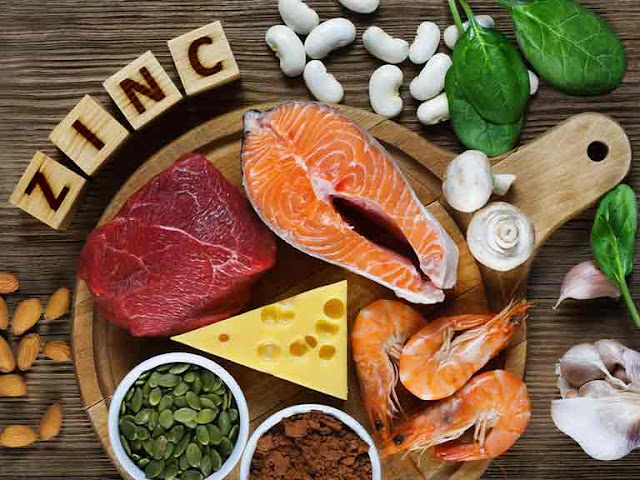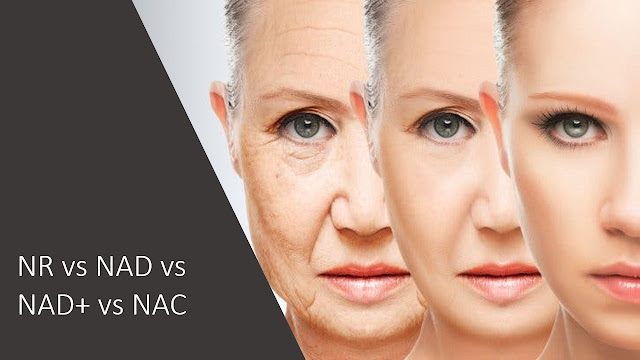16 Best Stem Cell Supplements 2024: Can a dietary supplement help your stem cells?
For example, to create a stem cell supplement, you could focus on the different ways that stem cells get impacted by supplement ingredients, like proliferation or stem cell production. This means that the substance helps stem cells make more of themselves. You then choose from some the ingredients below and you’ve got a new supplement. However, is this really what’s desired? Do you want more stem cells? Is that a good thing or a bad thing? What other impacts do these supplements have on stem cells? All of this is largely unknown.
Specific Supplements
Here we’ll start with a few common supplements you might see on the grocery store shelf, to see what the research says about how they impact stem cells. Realize that many of the research studies that can be found on this topic may use a different stem cell type. Hence, we tried to focus mostly on mesenchymal stem cells.There are Different Stem Cell Types?
You’ve probably heard about embryonic stem cells (ESCs). These are derived from an embryo and they are controversial. None of the research on stem cell supplements reviewed here used ESCs. Then there are adult stem cells that live in your body and act as the repairmen. These come in many flavors, but the type I have focused on in this review are called mesenchymal stem cells (MSCs), the triathlete of adult stem cells. They can both direct tissue repair like a general contractor and also differentiate (turn into) many different cell types like bone, cartilage, muscles, tendon, etc… These cells also have subtypes that come from various tissues like bone marrow, fat, or elsewhere. While similar, these different MSC types are not the same.Best Stem Cell Supplements
1. Glucosamine and Chondroitin
Glucosamine can for example help mesenchymal stem cells to generate cartilage cells (R). Glucosamine can also improve stem cell proliferation in the gut (R,R).
Chondroitin also has real measurable effects on knee cartilage in actual patients. In one study, it reduced cartilage volume loss on MRI after 6 months (R). Glucosamine also seemed to help cartilage quality when measured on a specialized MRI (R). In another study, glucosamine reduced cartilage breakdown products (R). Finally, when compared to prescription Celebrex, the combination of glucosamine and chondroitin were better at improving function and reducing cartilage breakdown in the knee (R).
2. Curcumin (Turmeric)
The most commonly promoted anti-inflammatory supplements right now are curcumin and turmeric. Turmeric and curcumin are derived from the turmeric root with turmeric being the spice you know from Indian cooking, and curcumin one of the chemical compounds known as curcuminoids, which are believed to be biologically active. In addition, in order for curcumin to be absorbed in the gut, a black pepper extract is commonly required.In one study that used adipose MSCs to treat heart attacks, curcumin improved the viability of the cells, reduced scarring in the heart muscle being repaired, and promoted new blood vessel formation (R). In another involving bone marrow MSCs, curcumin improved bone formation (R).
The curcuminoids also impact arthritis through anti-inflammatory pathways and reducing inflammatory cytokines. All of these effects have translated into real measurable impacts on patients with knee arthritis (R). In other studies, Curcumin has been shown to be as effective as common NSAID anti-inflammatories such as Diclofenac (R).
To supplement curcumin with piperine, take 500 mg of the former with 5-6.7 mg of the latter, thrice a day (i.e., 1,500 mg of curcumin and 15-20 mg of piperine per day) (R).
3. Resveratrol and Pterostilbene
Resveratrol (RSVL) is a natural type of polyphenolic phytoestrogen and is mainly found in red grapes, blueberries, peanuts, and other plants. The effect of resveratrol on stem cell is well documented (R).- The lower end of supplementation tends to be for cardiovascular health, insulin sensitivity, and longevity for somebody who is otherwise unhealthy is 5-10mg daily. For persons who are otherwise healthy, dosages between the range of 150-445mg have been used (with no clear indication for what is the optimal dose).
- Supplementing for cerebral blood flow requires a dose in the 250-500mg range whereas supplementation for aromatase inhibition requires 500mg as well.
- Supplementation of resveratrol refers to trans-resveratrol exclusively.
4. Quercetin and Fisetin
This can be found in many fruits, vegetables, grains, and leaves. Kale and red onions are examples of foods that contains an appreciable amount of quercetin among many others. It comes with a bitter flavor and is commonly used as an ingredient in foods, beverages, and dietary supplements.Here are the benefits of quercetin:
- Antioxidant
- It supports mitochondria
- It can prevent the death of cells
- It can protect your body by reducing your stress levels
- It can serve as a natural antihistamine and can get rid of allergy symptoms
- It is a safe alternative to painkillers since it can treat arthritis and joint pain
- Research suggests that it can support stem cell growth and differentiation (R)
- Currently, there are no ideal amounts set by the scientific community. You can ask your doctor regarding this one to find out how much is needed based on your health's current status.
- Majority of supplements require 500mg and it has to be taken twice daily. But with quercetin, you can already experience the benefits even if you take something lesser than that considering that it's known to be diet rich.
- Dosages of quercetin used are in the range of 12.5 to 25mg per kg body weight, which translates to a range of 1,136-2,272mg daily consumption of quercetin when in isolation.
- It is suggested to supplement with other bioflavonoids such as resveratrol, genistein, or green tea catechins to increase the potency synergistically and theoretically get the benefits at a reduced level of intake.
- When looking for quercetin, the form of dihydrate has the apparent best bioavailability followed by glycosides, aglycone, and finally rutinoside.
5. NMN (nicotinamide mononucleotide)
NMN is a substance that increases NAD levels in our cells. NAD is a pivotal molecule to protect and repair DNA and the epigenome, including in stem cells.NMN can improve and protect stem cells such as mesenchymal stem cells that form bone and fat tissue (R,R).
6. Vitamin C and AKG (Alpha KetoGlutarate)
Vitamin C can also improve stem cell health (R,R).But ideally, vitamin C has help from alpha-ketoglutarate, given these two substances are substrates for important epigenetic enzymes, such as the TET enzymes (R).
7. Green Tea Extract
Green Tea Extract is incredibly potent thanks to its high number of polyphenols, which have been shown to:8. Glycine (Amino Acid)
Glycine is a naturally-occuring substance in our body; in fact, it’s an amino acid. However, during aging, levels of glycine decline.Glycine has shown to improve stem cell health (R,R). It can do this by protecting proteins in cells, or by inducing autophagy, which is the digestion of cellular waste.
9. Molecular Hydrogen
Molecular hydrogen is the smallest anti-oxidant. The ability of molecular hydrogen (H2) to protect the DNA and the mitochondria from oxidative damage may have beneficial effects on chronic diseases and cancer. But perhaps it could help slow down or reverse the aging process itself. A couple of cellular studies give us some interesting clues [R, R].It was already discovered that hydrogen can prolong the life of stem cells by reducing oxidative stress
(Biochem Biophys Res Commun. 2010).
A hydrogen-rich environment reduced both oxidative stress and aging in cells. Some scientists think
that drinking hydrogen water could increase longevity in humans (Circ J. 2016).
10. Olive oil and Mediterranean Diet
PubMed has indexed 30 research studies on olive oil and stem cell.
A Mediterranean diet rich in virgin olive oil is effective in boosting stem cells. A 4-week control study published in The American Journal of Clinical Nutrition (2011) showed that compared to those on a diet high in saturated fat or a diet low in fat but high in carbohydrates, those on a Mediterranean diet rich in virgin olive oil showed a significant doubling in their endothelial progenitor cell count in the blood.
11. Dark chocolate
Dark chocolate contains flavanols that have biological properties. Researchers at the University of California recruited patients with coronary artery disease in a 30-day controlled trial. One group drank hot chocolate low in flavanols (only nine mg per serving) twice a day, and the other group drank hot chocolate high in flavanols (containing 375 mg per serving) twice a day. The results were surprising: the group with high-level flavanol had twice as many stem cells in their blood as that with low-level flavanol, and the former’s blood flow improved twice as much as the latter.
12. Black tea
A team of Italian researchers divided patients who had mild to moderate hypertension but did not receive medication into two groups. Group A drank plain black tea without sugar and milk twice a day while group B drank other beverages twice a day. One week later, blood tests showed the number of endothelial progenitor cells in the blood in the black-tea group rose by 56 percent, with an improved ability of blood vessel widening.
13. L-Carnosine (Amino Acid)
15. Taurine
Stem cells hold the key to tissue repair and regeneration. But as the body ages, its numbers and activity decline.Studies have shown that taurine can help stimulate stem cell production (Nutr Neurosci 2017), particularly neural stem cells, which can boost brain function, in addition to regenerating various tissues throughout the body.
16. Blue Green Algae
The Science Behind: Bluegreen Algae (AFA) Consumption over 48 Hours Increases the Total Number of Peripheral CD34+ Cells in Healthy Patients (Journal of Personalized Medicine 2020).A Look at Many Supplements and How They Influence Stem Cell Differentiation
The image below is from a review article that looked at how many different supplements and plant extracts changed how stem cells turned into other cell types (differentiation). For example, curcumin pushed stem cells towards making more stem cells (proliferation) and toward muscle cells. Quercetin pushed stem cells toward making bone. Flavonoids like quercetin and others found in teas, cocoa, grapes, apples, etc… helped stem cells become cartilage.
More on Stem Cell Proliferation
Making Sense of All of this Research
Sources and References:
- https://regenexx.com/blog/stem-cell-supplements-2/
- https://lcrhealth.com/stem-cells/
- Best Foods to Increase Stem Cells in Your Body
This article is part of the Anti Aging series.
Purtier Placenta 7th Edition - 60 Capsules, Made in New Zealand
Purtier Deer Placenta health supplement contains fresh deer placenta cell extracts and deer protein that is bio-compatible with human biology. Because of this biocompatibility, deer placenta stem cell extract, along with other natural ingredients, is naturally chosen as the main active component.
- 60 Softgels - Made in New Zealand using High-quality Enteric coating Biosoftgel (aka Liquid Gel) & Nano Emulsification Technology that improve nutrient delivery productivity and allow effective and efficient absorption into the body.
- NATURAL PRODUCTS - Formulated using 100% finest quality deer placenta extract. Only support government licensed farms, harvested in compliance with the quality standard of placenta food stipulated by New Zealand Government.
- YOUTH - Antiaging and restorative formulations have often relied upon placenta as a primary ingredient in formulations designed to rejuvenate the body.
- RECHARGE ENERGY AND VITALITY - Formulated with the combination of Deer Placenta extract with Hyaluronic Acid. Regenerates cells to counter the aging process, protects skin against UV damage.
- MORE POTENT DEER PLACENTA - Advance synergy formulation, freeze drying and nitrogen filled technology preserve live cells bioactive content for 3-4 years after extraction for longer lasting anti-aging effect.









.png)
Comments